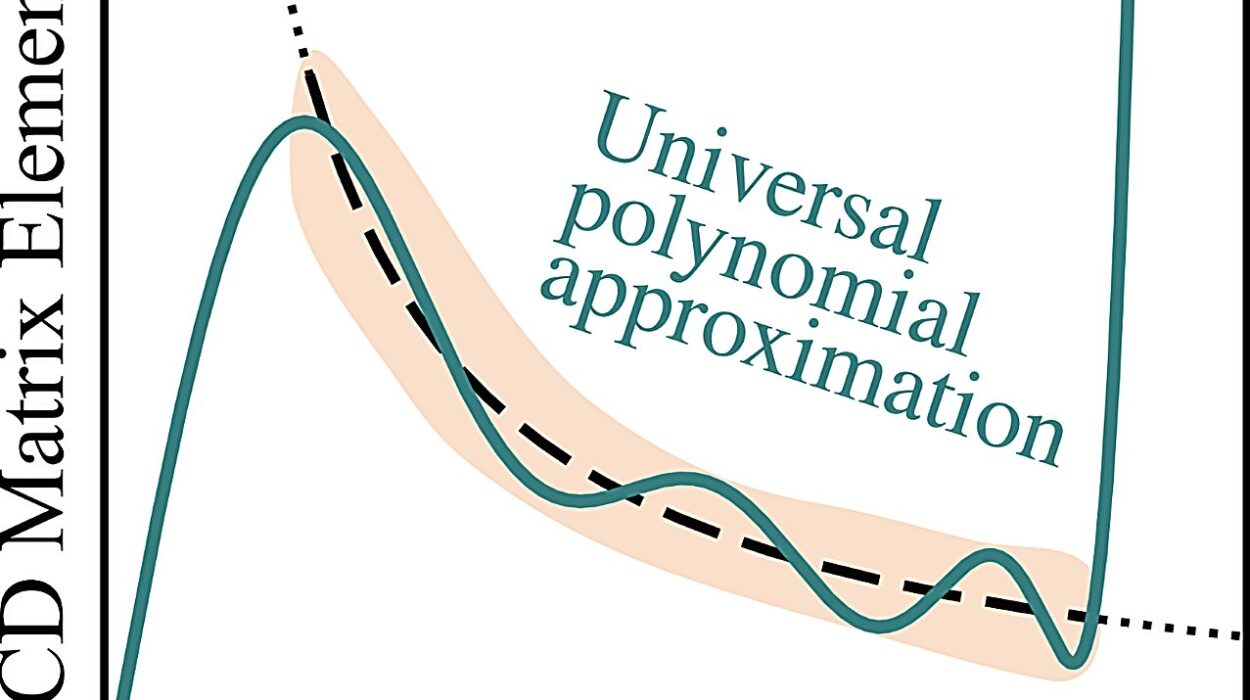At first glance, thought appears deceptively simple. You see a tree and recognize it. You recall the face of an old friend. You weigh a difficult decision. Thought weaves seamlessly through every moment of our lives, coloring our memories, fueling our emotions, and shaping our identities. And yet, what exactly is a thought? Where does it come from? What happens in the shadowed corridors of the brain when we pause to consider, imagine, or reflect?
The act of thinking, though intangible in nature, is one of the most complex and awe-inspiring processes ever studied by science. Beneath every passing moment of awareness is a spectacular choreography of electrical signals, biochemical messengers, and shifting neural patterns—millions of neurons sparking across a brain so intricate that even now, in the 21st century, it resists complete understanding.
To explore the science of thought is to venture into the very heart of what makes us human. It is to stare into the mirror of the mind and ask not just how we think, but why.
The Brain: An Engine of Electric Storms
Your brain is often compared to a computer, but this comparison, though helpful, fails to capture the full strangeness of what lies beneath your skull. Unlike a machine, the brain is wet, organic, flexible, and self-modifying. It consists of roughly 86 billion neurons—cells specialized for sending and receiving information.
These neurons do not operate in isolation. Each one may form thousands of synapses, or connections, with other neurons, creating a vast network of more than 100 trillion synaptic links. Thought does not live in any single cell, but in the dance between them. It arises when information flows across these connections in coordinated patterns, like the shifting notes in a complex symphony.
Neurons communicate through electrical impulses called action potentials. When a neuron fires, it sends a rapid electrical spike down its axon. This spike triggers the release of neurotransmitters—chemical messengers—into the synaptic gap between neurons. The receiving neuron, in turn, interprets the signal and decides whether to pass it on.
The pattern, speed, frequency, and location of these signals determine the kind of thought that emerges. Thinking about math versus composing a poem versus recalling a painful memory involves different circuits, neurotransmitters, and regions of the brain. But at the root of it all is this elegant storm of electricity and chemistry.
Thinking Begins Before You Know It
One of the strangest truths about thinking is that much of it happens before you are consciously aware of it. The idea that your thoughts are entirely under your control is a comforting illusion. In reality, the brain is constantly processing information beneath the surface of consciousness—filtering stimuli, anticipating outcomes, making associations, and rehearsing possible actions.
In fact, neuroscientists have found that decisions can often be predicted by monitoring brain activity before a person consciously makes a choice. Experiments using fMRI have shown that areas such as the prefrontal cortex and motor cortex light up seconds before a person reports having decided to press a button or select an image. This suggests that conscious thought may actually lag behind unconscious processes.
Yet, consciousness isn’t irrelevant—it’s more like the conductor of an orchestra, guiding and integrating the activity already underway. While unconscious processing handles routine tasks and initial assessments, consciousness allows you to pause, reflect, reconsider, and change course. It’s where free will may reside—not in the moment a decision is made, but in the ability to override an automatic response.
Different Thoughts, Different Paths
Not all thoughts are created equal. When you think, your brain doesn’t light up all at once. Different kinds of thinking—logical reasoning, emotional reflection, visual imagination, language, planning, introspection—activate different neural circuits. Scientists often divide these into what are sometimes called “brain networks,” each specializing in certain types of mental tasks.
The default mode network (DMN), for example, is active when your mind is at rest, wandering freely. This network is thought to be involved in daydreaming, autobiographical memory, envisioning the future, and understanding others’ minds. It’s the source of much creativity and internal dialogue.
When you concentrate on a goal or a complex problem, the central executive network (CEN) takes charge, coordinating attention and working memory. Meanwhile, the salience network helps you switch between internal and external focus, scanning for relevant information and determining what deserves attention.
These networks are not static. They interact, compete, and cooperate, often within milliseconds. The fluid switching among them is what gives thought its flexibility and nuance.
Memory: The Backbone of Thought
No thought exists in a vacuum. Every time you think, you draw on memory. Whether recalling a fact, imagining a future scenario, or even solving a novel problem, the brain sifts through vast libraries of past experiences.
Memory is not a single system but a collection of processes. The hippocampus, a seahorse-shaped structure buried deep within the brain, is essential for forming new declarative memories—those you can consciously recall. Damage to this region can leave a person trapped in the eternal present, unable to store new information.
But other parts of the brain handle different kinds of memory. The amygdala attaches emotional significance to memories. The prefrontal cortex helps you remember goals and rules, and the cerebellum stores motor memories—how to ride a bike or play a song.
Importantly, memories are not like video recordings. Each time you recall something, your brain reconstructs it, and this act of reconstruction can subtly change it. Thought, then, is built on a foundation that shifts with use. What you remember—and how you remember it—can evolve over time.
Language and the Architecture of Thinking
Can you think without language? It’s a provocative question. Some argue that inner speech—those silent conversations you have with yourself—is essential to structured thought. Others point out that we often think in images, emotions, or even abstract sensations.
Still, language plays a profound role in shaping thought. The structure of your native language may influence how you categorize the world, remember events, or experience time. Some languages, for example, have no words for left and right but instead use cardinal directions. Speakers of such languages are often astonishingly good at orienting themselves in space.
Language allows abstraction. It lets you refer to things not present, compare ideas, assign symbolic meaning, and share complex concepts with others. The ability to name, label, and define enhances memory and facilitates logical reasoning. In this way, language is not just a tool for expressing thought—it helps generate it.
Emotion and Cognition: A Dynamic Duo
Thinking and feeling are often treated as separate domains. We imagine the mind as cool and rational, and the heart as messy and irrational. But neuroscience tells a different story.
Emotions are not distractions from thinking—they are deeply embedded in the cognitive process. They help prioritize information, guide decision-making, and influence memory. The amygdala, a key brain region involved in emotional processing, is tightly connected to areas responsible for attention and memory. When you feel something strongly, you are more likely to remember it and consider it important.
Emotions also influence reasoning. The “gut feelings” that guide so many of your decisions are real physiological signals—bodily states, monitored by the brain, that inform your sense of risk or reward. While these can sometimes lead us astray, they often provide valuable shortcuts for rapid decision-making.
Moreover, the absence of emotion can be just as disruptive as its excess. Patients with damage to emotional centers of the brain often struggle to make even simple decisions, unable to weigh options meaningfully. Emotion, in short, is the glue that binds thought to action.
Creativity: The Wildfire of the Mind
One of the most mysterious forms of thought is creativity—the sudden flash of insight, the leap beyond logic, the novel idea that seems to come from nowhere.
Creativity is not confined to artists or musicians. Scientists, entrepreneurs, engineers, and even mathematicians rely on it. And while it may feel like magic, it too has a neural basis.
Creative thought involves divergent thinking—the ability to generate many possible solutions to a problem—and this process often draws on the default mode network. During moments of rest, the brain freely explores associations and recombines elements from memory. When these wandering explorations collide with focused attention, insight can occur.
Neuroscientists have also found that highly creative people often show increased connectivity between different brain networks. They can shift fluidly between imaginative exploration and logical evaluation—a dynamic that supports originality and usefulness, the twin pillars of creative thinking.
The Physical Cost of Thought
Thinking is not free. It consumes energy—glucose, oxygen, and neurotransmitter supplies. Though the brain accounts for only about 2% of body weight, it uses roughly 20% of the body’s energy at rest. Complex mental tasks can temporarily increase that demand.
This is why deep concentration can feel physically exhausting. It’s also why stress, poor sleep, or illness can impair thinking. The brain is a hungry organ, and high-level cognition depends on physical resources.
Recent research even suggests that thinking too hard for too long may lead to a buildup of toxic byproducts in the brain, such as glutamate, which can affect performance. Rest, exercise, nutrition, and sleep are not luxuries—they are essential to healthy thought.
Thought and the Self: Who Is Thinking?
As you explore the science of thought, a deeper question begins to stir: who, exactly, is doing the thinking?
The idea of a single “self” sitting in the driver’s seat of consciousness has come under scrutiny. The brain is not a unified command center but a collection of semi-independent modules, each with its own job. What you experience as a single stream of thought is the integration of many parallel processes.
Moreover, thoughts often emerge unbidden. You don’t choose your next thought; it appears, shaped by prior experience, biology, context, and randomness. This raises philosophical questions about free will, identity, and consciousness.
Yet despite the decentralization of the brain, there is a sense of cohesion. The self may be more of a narrative—a story the brain tells itself, integrating memories, goals, emotions, and sensations into a unified whole. You are not the voice in your head—you are the awareness behind the voice.
Can We Control Our Thoughts?
One of the great challenges of being human is learning to manage our own thoughts. Negative thinking, rumination, and distraction can sap joy and productivity. But can we actually control what we think?
To a degree, yes. Practices such as mindfulness meditation, cognitive behavioral therapy (CBT), and attention training have been shown to alter brain function and improve mental health. These techniques help shift the focus of attention, reframe negative beliefs, and cultivate greater awareness of mental patterns.
The brain’s neuroplasticity—its ability to change in response to experience—means that even deeply ingrained thought habits can be altered. But change takes effort, repetition, and time. Like physical fitness, mental control is a skill that must be developed.
The Future of Thought
As neuroscience advances, our understanding of thought grows ever more sophisticated. Brain-computer interfaces (BCIs) are beginning to allow people to control devices with their thoughts. Artificial intelligence is beginning to mimic aspects of human reasoning. Researchers are exploring ways to enhance memory, boost creativity, or even decode thoughts using brain imaging.
But these breakthroughs also raise ethical questions. What happens when thoughts can be read, predicted, or manipulated? Who owns your inner life? How do we preserve mental privacy and autonomy in a world where technology increasingly penetrates the mind?
These questions remind us that thought is not just a scientific phenomenon—it is a sacred space. It is the engine of freedom, identity, and meaning.
The Miracle Between Moments
In the end, thought is both the most ordinary and the most extraordinary thing you do. It is with you from the moment you wake to the moment you sleep. It allows you to love, to learn, to dream, and to create. Every poem, every scientific theory, every whispered confession, every moral choice—began as a thought.
To understand thought is to understand the architecture of awareness. It is to peer into the machine of meaning. It is to see yourself, not just as a body moving through space, but as a mind unfolding across time.
The next time you pause to think, remember this: behind that simple act is a universe of neurons, memories, emotions, and sparks of insight—an orchestra of biology and mystery playing the music of being.
That music, unique to you, is the science—and the miracle—of thought.






